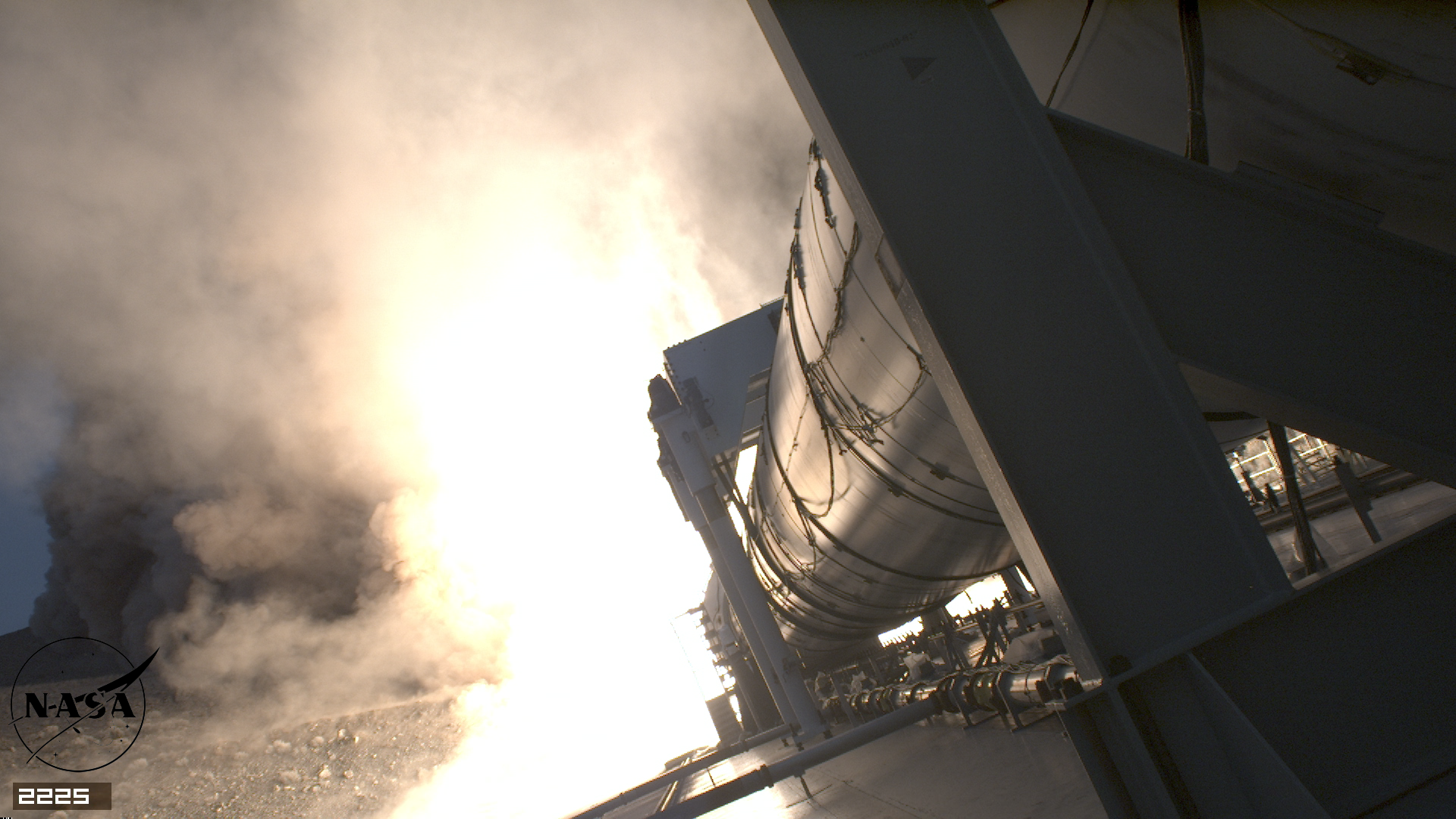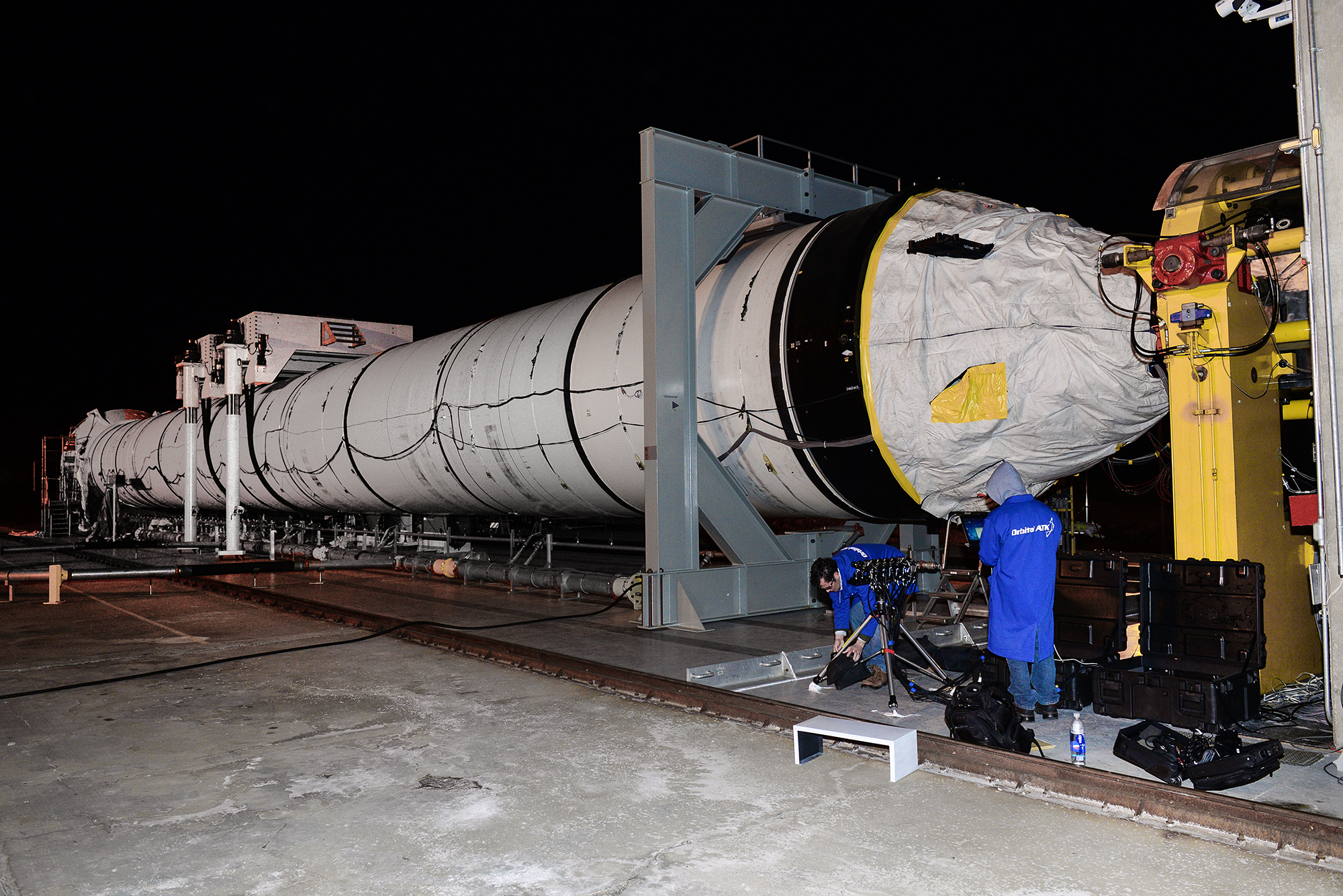Dozens of cameras were rolling when the powerful, five-segment booster for NASA’s new rocket, the Space Launch System, fired up March 11 for a major ground test. Behind the scenes that day, a different kind of video also was being captured to provide critical data for the vehicle’s first trip to space.
Eight cameras with more than 40 different settings — including varying exposures — were set up near the forward portion of the booster at Orbital ATK’s test facilities in Promontory, Utah. The cameras were computer controlled and cycled through pre-programmed settings during the two-minute test. The work was done by the SLS Flight Imaging Launch Monitoring Real-time System (FILMRS) team at NASA’s Marshall Space Flight Center in Huntsville, Alabama, where the SLS Program is managed for the agency.
The team is now using the footage to determine the best settings for the six externally mounted cameras that will be affixed to the SLS core stage when it carries an uncrewed Orion spacecraft beyond low-Earth orbit to test the performance of the integrated system during Exploration Mission-1.
When completed, two five-segment, solid-rocket boosters and four RS-25 main engines will power the SLS as it begins its deep space missions. The boosters operate in parallel with the main engines for the first two minutes of flight, providing more than 75 percent of the thrust needed for the rocket to escape Earth’s gravitational pull.
“It was important for us to test these cameras before the first flight of SLS, and the booster firing was a great opportunity for us to get the right settings for the best possible picture on launch day,” said Jonathan Pryor, an electrical engineer on the FILMRS team at the Marshall. Pryor also wrote the software for the booster test cameras.
The footage from the booster test provides data that will allow the imagery team to optimize settings for two of the cameras that will be looking into the bright plume of the solid rocket boosters during that first flight.
“The flight cameras will help us determine how the vehicle is performing during ascent and booster separation, which can help reduce future risk in a unique way compared to sensors alone,” said Beth St. Peter, SLS imagery integration lead at the Marshall. “That’s why we need the best settings possible for these cameras — if a scene is too dark or too bright, we can lose important data.”
After more lab testing at Marshall, the final settings for the flight cameras will be determined by mid-April.
“The team is no stranger to this work, as we’ve performed in similar settings testing during the Space Shuttle Program,” said Jeremy Myers, FILMRS engineering lead in the Space Systems Department, part of the Marshall Center’s Engineering Directorate. “The FILMRS team had the additional task of developing the hardware in house for this program, as the design work was contracted out during the shuttle program. Marshall has the unique expertise to develop imagery systems for rugged launch environments, like SLS.”
The booster static test is a significant milestone for the SLS as part of NASA’s journey to Mars, and follows years of development. It is one of two ground tests to support qualification of the booster for flight. A second test is planned for early 2016. Once qualification is complete, the hardware will be ready to help send the rocket, along with NASA’s Orion spacecraft, on its first flight test.
The first flight test of the SLS will feature a configuration for a 70-metric-ton (77-ton) lift capacity. As the SLS evolves, it will provide an unprecedented lift capability of 130 metric tons (143 tons) to enable missions even farther into our solar system.
For information about NASA’s SLS, visit:



























